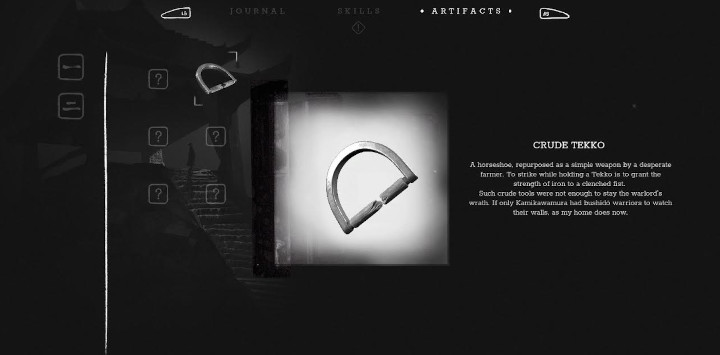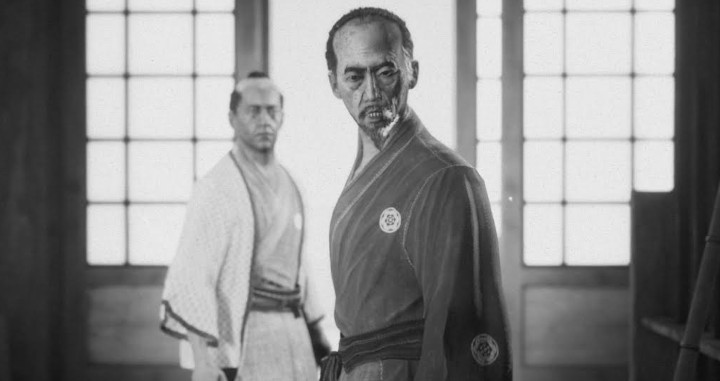
It’s not all that often that I get to play two games by the same developer in as many weeks, and it’s even rarer that both games stand in stark contrast to one another. And yet, that is the situation I find myself in, first having played and reviewed Shadow Warrior 3, and now having played a preview build of Trek to Yomi, both from developer Flying Wild Hog and publisher Devolver Digital. If you were to tell me that one developer had a hand in both of these titles, I would be hard-pressed to see any similarity, or at least enough where I could say, “Yeah, sure, I can see that.” (I should point out that Trek to Yomi did have some developmental help from Leonard Menchiari, which wasn’t the case for Shadow Warrior 3).
Whereas Shadow Warrior 3 was a bombastic, over-the-top first-person arena-style monster-shooter and platformer à la Doom or even Quake, Trek to Yomi is instead a fixed-camera, third-person melee action game, more akin to recent titles like Ghost of Tsushima (especially with its Kurosawa mode) or the lesser known indie-budget title, Katana Kata. But comparisons like these can only go so far. The real question is: Does Trek to Yomi stand firmly on its own two feet and manage to deliver a compelling and fun experience?
I think it does. Trek to Yomi is a fairly polished and enjoyable little romp, albeit a slow-paced and methodical one.
The setup is pretty simple: You start the game as Hiroki, a young apprentice to a master samurai named Sanjuro. One day, while practicing your sword skills (a scenario that doubles as the tutorial), bandits raid your village. Your master springs into action, and even though he strictly instructs you to stay put, you join in the action to help repel the invading marauders. After being goaded and kind of aided by Sanjuro’s daughter, Aiko, you run headfirst into battle, which, of course, culminates in a calamitous event.
The story then skips ahead a few years and you play as a more mature Hiroki, still hacking and slashing your way through nogoodniks.

What made Trek to Yomi stand out when I initially saw the announcement trailer at E3 2021 — and really, what drew me to the game in the first place — is its stark, monochrome color palette and fixed-camera viewpoint. And even though the camera is fixed, that doesn’t mean it is merely static. It very much flows and tracks with the player’s actions and movements, switching between a more 2D-esque side-scrolling vantage to a perspective that sees the player character running to or from the camera, with NPCs sort of fading into the shot as you approach them.
I will say, however, that the art style can make it a little difficult to see where you are supposed to go, either because it’s too dark in an interior level or it just isn’t telegraphed well enough.
The combat is relatively simple, with both light and strong attacks, as well as high and low variations when pressing up or down on the analog stick while striking. There is also a block button, which doubles as a parry that will open enemies up for a nice counterattack. For the most part, the swordplay feels fairly forgiving, though I’m sure it will prove as difficult to master as it is easy to pick up.

You can also throw Bo-shurikens, which helps mix up your attack options and keep enemies at bay if you are in a situation that requires juggling multiple attackers.
Even though most of the time you are on a fixed-rail path, this isn’t as rigid as it might appear at first; there does appear to be some branching in the path, which can lead to side areas or allow you to get the drop on enemies.
Early in my gameplay demo, I just happened to go up to a fence, and Hiroki kicked it open, much to my surprise. By following this branching path, I was able to cut a nearby rope that was holding up some suspended pieces of lumber, which came crashing down on some unsuspecting bandits.
I could imagine these side paths might also lead to collectibles and possibly even NPCs that might ask a task of you or just reward you for stopping by, but that could just be wishful speculation on my part. I haven’t seen enough yet to say how detailed these side paths could end up being in the final build of the game.
I will say, though, that I occasionally found it difficult to know exactly where I was supposed to go next, because of the fixed camera and lack of any real direction from the HUD. But this is a fairly minor quibble; it didn’t cause too much frustration.

Trek to Yomi is littered with trinkets, art, and other objects to find, much of which just help flesh out the world or lore, but some of these items do grant stat upgrades. There are even NPCs that might offer you a reward for talking to them or helping them perform a quick menial task, like pushing a cart that also happens to be blocking your path. For example, I rescued a woman from some bandits that had already killed her husband, and she rewarded me with an increase in the amount of throwing daggers I was carrying. You even unlock some new combat combos along the way, at least in the section of Trek to Yomi that I played.
In your journey, you will come across generously placed shrines, which serve as save points and will also replenish lost health. But once you use one, it will close — you won’t be able to keep spamming them over and over to exploit their health-giving effects. You will eventually unlock the ability to do a cool finisher move, which will also regenerate some lost health.
Even though my time with Trek to Yomi was fairly brief, I walked away feeling pretty positive overall. At least on the normal difficulty, blocking and parrying felt pretty forgiving. If I made a mistake, it didn’t feel cheap; it just felt like I had failed to implement the action correctly. In the early sections that I played, it only took two hits max to fell any given grunt, and some went down with one well-placed or properly timed counter, as opposed to requiring an inhuman amount of hacking and slashing.

If nothing else, Trek to Yomi feels deliberate in its approach to combat, and the black-and-white art style and native Japanese dialog lend it an air of authenticity and maturity. The plot has just enough political intrigue to keep me engaged, and from what I could tell from my time with it, strong characters and a decent sense of place and time.
I look forward to spending more time with Trek to Yomi when it releases. It is currently slated for a spring launch this year for Steam, PS4, PS5, Xbox One, and Xbox Series S/X.
